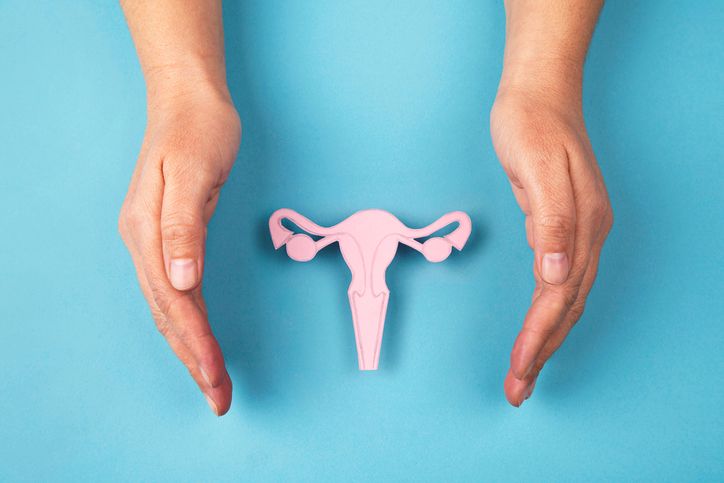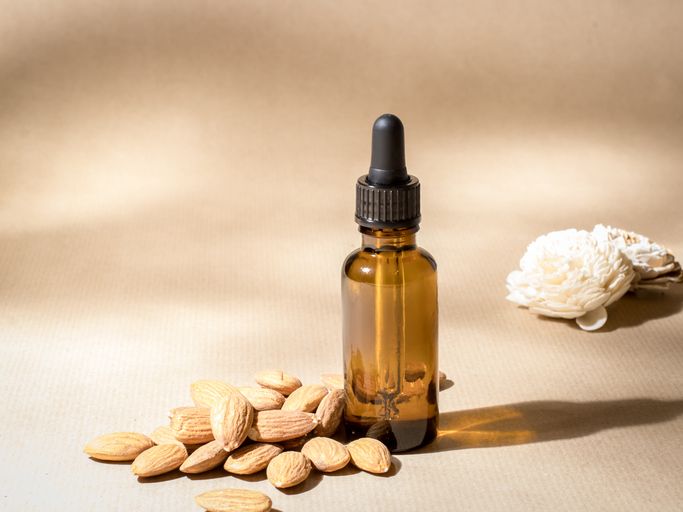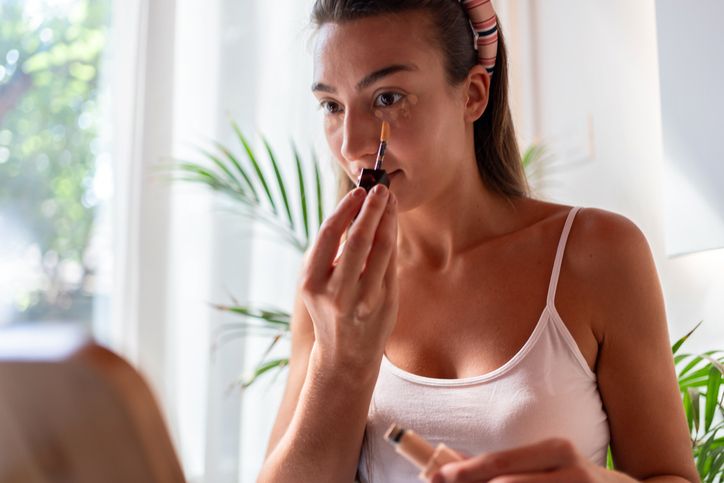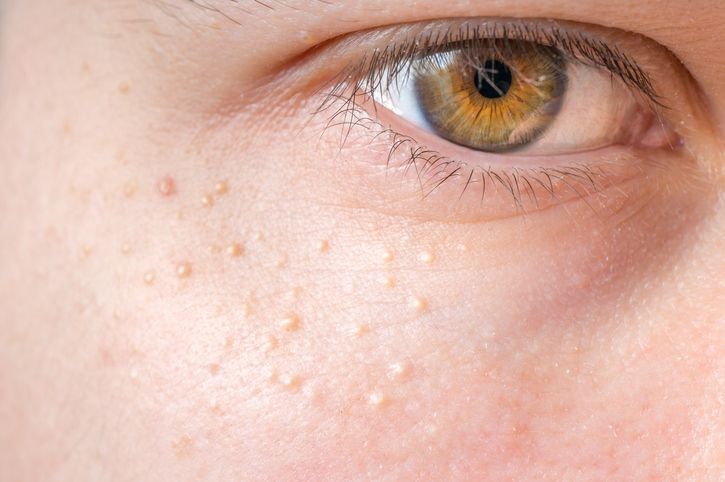- Home
- Trend
- Weight Loss Strategies
- Acne Tips
- Hair Health Information
- Blemish Removal Tips
- Acne Scar Removal Tips
- Muscle Building Techniques
- Intimate Care Tips
- Postpartum Intimate Care
- Eye Bags Wiki
- Tips for Face Slimming
- Secret of Permanent Hair Removal
- Breast Enlargement Tips
- Cure to Snoring
- Marionette Lines
- Skin-Tightening Secrets
Vaginal darkening and skin discoloration in the intimate areas are common concerns for many women, yet they often remain under discussed due to the sensitivity surrounding this topic. In this article, we’ll explore why vaginal darkening occurs, the differences between hyperpigmentation and irritation and more.
Vaginal Darkening: A Natural Process?

Vaginal darkening, especially in the labia, is a natural occurrence that many women face as they age. Although this change is entirely normal, it often remains a source of concern for women who are unfamiliar with the causes behind it. As time passes, certain internal and external factors influence the appearance of the vulva and surrounding intimate areas, leading to gradual skin discoloration.
The skin in these areas is sensitive and differs from other parts of the body in its response to environmental and physiological changes. Some women may experience labia darkening following certain life events, hormonal shifts, or as a part of the aging process.
Hyperpigmentation vs. Irritation: Key Differences
Before we dive deep into vaginal darkening, it's important to distinguish between hyperpigmentation and skin irritation. Although both conditions can cause skin discoloration, they have different underlying causes, symptoms, and solutions. Understanding these differences is key to addressing the discoloration effectively.
Hyperpigmentation
Hyperpigmentation occurs when the skin produces too much melanin, the pigment responsible for skin color. This process results in areas of the skin becoming darker than their normal tone. In the case of vaginal darkening, hyperpigmentation typically develops in response to factors like hormonal changes, aging, and friction.
When the body experiences hormonal fluctuations, such as during pregnancy or menopause, or even when using birth control pills, it may trigger an increase in melanin production in sensitive areas like the labia, mons pubis, or inner thighs. As melanin accumulates in these areas over time, the skin gradually darkens. This process is generally slow, and the darkened patches often become more noticeable with age.
Hyperpigmentation from melanin is not usually painful or irritating. The skin is still healthy, but the color changes due to the natural buildup of melanin in response to internal triggers. Over time, this darkening can become more pronounced, particularly after significant life events like pregnancy, hormonal treatments, or as a normal part of aging.
Skin Irritation
On the other hand, skin irritation is a response to external damage or stress on the skin. This damage can come from things like harsh chemicals, tight clothing, or excessive friction. When the skin becomes irritated, it often reacts by becoming red, swollen, sore, or dry. In intimate areas, irritation might also cause itching or a burning sensation.
Irritation is typically temporary, and if addressed, the skin can heal and return to its normal state. However, if left untreated, irritation can sometimes lead to post-inflammatory hyperpigmentation (PIH). This is a form of hyperpigmentation that occurs after the irritation has caused damage to the skin. When the skin heals, the body may produce extra melanin in the affected area, leading to dark spots or patches.
Irritation is often easy to identify because it’s usually accompanied by symptoms like redness, pain, or discomfort. It can be triggered by factors such as wearing tight clothing, using scented soaps or harsh shaving creams, or frequent friction from activities like exercise or sexual activity. Once the irritant is removed, the skin often heals, and the irritation fades. However, if the irritation persists or isn't addressed, it may lead to further pigmentation changes.
免費體驗
Fotona Vaginal Tightening Machine
1 Minute Self-Registration
Date should not be before minimal date
Reason 1: Melanin Production and Its Impact on Skin Color
The vaginal area, including the mons pubis, labia majora, labia minora, and vulva, naturally contains higher concentrations of melanin, the pigment responsible for skin color. This increased melanin is why these areas tend to appear darker than other parts of the body. Melanin is produced in response to various factors such as sun exposure, friction, and even hormonal changes, all of which contribute to skin darkening.
As melanin production increases, the skin naturally adapts by becoming darker in certain areas. Melanin acts as a protective barrier, guarding the skin against damage from ultraviolet (UV) rays. However, as time goes on, melanin production can become uneven, causing dark patches or spots in areas that are frequently exposed to friction, such as the labia majora or inner thighs.
For many women, darkening in the vulva and surrounding areas is a gradual process that occurs over time, especially after significant life events like pregnancy or menopause. These changes are a direct result of the body’s hormonal fluctuations, which influence melanin production in the skin.
Reason 2: Hormonal Changes and Vaginal Darkening
Hormonal fluctuations are one of the most influential factors in vaginal darkening, especially in sensitive areas like the labia. These changes typically occur during key life events such as pregnancy, menopause, or even when taking birth control pills. During these times, a woman's body undergoes significant shifts that can increase melanin production and trigger hyperpigmentation in the vulva and labia.
Pregnancy and Melanin Response
Pregnancy is one of the most common triggers for vaginal darkening. As the body undergoes dramatic hormonal shifts to support the growing fetus, the production of melanin increases, particularly in the skin of the vulva and labia. This increased pigmentation, known as melasma, is a natural protective mechanism designed to shield the skin from the harmful effects of UV rays during pregnancy. For many women, this can lead to visible darkening of the labia majora, labia minora, and mons pubis, often becoming more noticeable as pregnancy progresses.
In some cases, the skin in these areas may lighten again after childbirth, but this is not always the case. For many women, darkening can persist long after pregnancy has ended, though it may gradually fade over time.
Birth Control Pills and Hormonal Imbalances
Women taking birth control pills may also notice changes in their skin, particularly in their vulva and labia. The hormonal fluctuations caused by oral contraceptives can increase the production of melanin, which, in turn, leads to darker skin in intimate areas. This effect is similar to that of pregnancy, as both involve hormonal shifts that influence the melanin pigment in the skin.
If you're on birth control and experiencing labia darkening or hyperpigmentation, it may be due to the hormonal imbalance caused by the pills. In such cases, the darkening may subside when the medication is discontinued, though some women may continue to experience darker skin in intimate areas.
Menopause and Skin Aging
Menopause is another stage of life that is often accompanied by significant hormonal changes. As estrogen levels decrease, the skin begins to lose its elasticity, and the body’s ability to regenerate new skin cells slows down. This leads to thinner, more fragile skin, especially in the vulva and labia. The loss of collagen and elasticity makes it harder for the skin to repair itself, and as a result, hyperpigmentation and dark spots can become more noticeable.
Moreover, as the skin becomes thinner, melanin production in these areas may become more prominent, causing uneven skin tone and darkening of the skin. As aging skin becomes more prone to hyperpigmentation, the effects of vaginal darkening may become more apparent over time.
Reason 3: External Factors That Contribute to Vaginal Darkening

While hormonal changes are the primary drivers of vaginal darkening, external factors also play a significant role in the skin's appearance. From friction caused by tight clothing to the use of harsh chemicals, many everyday habits can contribute to skin discoloration in intimate areas.
Friction and Tight Clothing
One of the most common causes of vaginal darkening is the friction caused by tight clothing, such as leggings, skinny jeans, or tight underwear. Constant rubbing of the labia majora, mons pubis, or inner thighs can lead to the skin becoming irritated and inflamed. Over time, this continuous friction triggers the body's defense mechanism, producing more melanin in these areas as a protective response.
While this process helps shield the skin from further damage, it also leads to hyperpigmentation in areas prone to friction. For example, tight clothing may cause darkening of the vulva or inner thighs, and over time, these darkened patches can become more pronounced. Choosing loose-fitting clothes and breathable fabrics, like cotton underwear, can reduce the impact of friction and prevent unnecessary darkening.
Shaving and Hair Removal
Frequent shaving or waxing of the vulva and surrounding areas can also contribute to labia darkening. Shaving, in particular, can cause minor abrasions in the skin, which in turn may lead to post-inflammatory hyperpigmentation. After the skin is irritated or injured, the body responds by increasing melanin production in the affected area, often resulting in darker patches.
Waxing or shaving can also remove the top layers of the skin, causing a temporary imbalance that leads to dark spots. Additionally, shaving creams and gels, particularly those that contain harsh chemicals, can further irritate sensitive skin and promote darkening in intimate areas.
Environmental Factors and Skin Sensitivity
The vaginal area is one of the most sensitive parts of the body, and external factors like sun exposure, chemicals in soaps or detergents, and even environmental pollution can contribute to skin irritation and discoloration. For example, using scented soaps, harsh chemical products, or dyes in body washes can strip the skin of its natural oils and lead to skin irritation. This irritation, if left untreated, may lead to dark patches or uneven skin tone.
Even environmental factors like prolonged sun exposure can affect the delicate skin of the vulva and labia, causing sun spots or further pigmentation changes. Women should consider using gentle cleansers and moisturizers for their intimate areas to avoid aggravating any existing darkening.
免費體驗
Fotona Vaginal Tightening Machine
1 Minute Self-Registration
Date should not be before minimal date
3 Treatment Options To Relieve Labia Darkening
When it comes to lightening the skin in intimate areas, several treatment options are available, each with varying levels of effectiveness and potential side effects.
1. Kojic Acid and Topical Treatments
Kojic acid is a well-known ingredient in many skin-lightening formulations. It is primarily used in topical treatments because of its ability to inhibit the enzyme tyrosinase, which plays a central role in melanin production.
By reducing melanin production, kojic acid helps lighten areas of hyperpigmentation, including the labia and mons pubis. Additionally, products containing vitamin C and hydroquinone are also commonly used for vaginal lightening. These ingredients work synergistically to brighten the skin and reduce the appearance of dark spots and uneven skin tone.
However, while these treatments can be effective, they typically require consistent application over a period of time to show noticeable results. It's important to note that topical treatments may cause skin irritation, especially in the sensitive vaginal area, so it's crucial to test the product on a small patch of skin before applying it to larger areas. Additionally, the results are often subtle and gradual, requiring patience.
2. Genital Bleaching
Genital bleaching is another method used to lighten the skin in intimate areas. This process involves the application of chemical bleaching agents to the vulva, labia, or other areas with darkened skin. The chemicals in the bleaching creams or gels are designed to lighten pigmentation and provide a more uniform skin tone. However, genital bleaching carries a higher risk of skin irritation, allergic reactions, and potential long-term skin damage, particularly in sensitive areas.
While genital bleaching can offer immediate results, it’s not a permanent solution, and the darkened areas may return after some time. The chemicals used can sometimes cause burning, discomfort, or even more serious damage to the skin, especially when applied incorrectly. For a safer, more reliable option, laser treatments, like the Fotona Vaginal Tightening Machine, are a better alternative. These treatments target both skin tone and other concerns like skin laxity, offering a holistic solution without the risks of harsh chemicals.
3. Fotona Vaginal Tightening Machine: Beyond Just Tightening
One of the most effective treatments for addressing both vaginal darkening and overall vaginal health is the Fotona Vaginal Tightening Machine. This laser treatment uses advanced Er:YAG laser technology to address multiple concerns, including vaginal laxity, skin discoloration, and dark patches. The Fotona machine offers a non-invasive, safe, and highly effective solution for women looking to enhance the appearance of their intimate areas.
How the Fotona Treatment Works?
The Fotona Vaginal Tightening Machine works by using a 360-degree laser emission probe, which is gently inserted into the vaginal opening. This probe delivers Er:YAG laser energy to stimulate collagen production within the vaginal walls.
Collagen is essential for skin elasticity and strength, so this stimulation helps tighten and firm the vaginal tissues. In addition to tightening, the laser energy also targets melanin, the pigment responsible for skin color.
Benefits of Fotona for Vaginal Darkening
The Fotona Vaginal Tightening Machine is particularly effective for addressing labia darkening and other forms of genital hyperpigmentation. One of the main advantages of this treatment is its ability to tighten vaginal tissues while simultaneously lightening the skin in intimate areas. This dual action not only addresses skin discoloration caused by hormonal changes, friction, or aging, but it also helps improve vaginal health and appearance overall.
Because the treatment is non-invasive, it carries minimal risk of side effects and requires no recovery time, making it an attractive option for women who want a quick, effective, and safe solution. The Fotona Vaginal Tightening Machine is FDA-cleared and CE-certified, ensuring that it meets the highest standards of safety and efficacy for all skin types.
Say Goodbye to Vaginal Discomfort and Darkening
If you’re seeking a safe, effective, and lasting solution to vaginal darkening, the Fotona Vaginal Tightening Machine might be exactly what you’ve been looking for. Don't wait for those dark spots to linger—take charge of your intimate health today. Embrace a solution that not only enhances your appearance but also promotes overall vaginal well-being.
Contact us today to schedule your consultation and learn how Fotona’s groundbreaking technology can help you achieve the results you deserve. Say goodbye to discomfort and dark spots—embrace a lighter, tighter, and more confident you!
Fotona Vaginal Tightening Machine免費體驗
Fotona Vaginal Tightening Machine
1 Minute Self-Registration
Date should not be before minimal date
FAQ

1. What causes labia darkening in women with polycystic ovary syndrome (PCOS)?
Polycystic ovary syndrome (PCOS) can cause hormonal imbalances that lead to increased melanin production, which may result in darkening of the labia and other genital areas. The hormonal fluctuations associated with PCOS can trigger skin changes, leading to increased pigmentation in the private areas.
2. How can yeast infections contribute to vaginal darkening?
Yeast infections can cause irritation and inflammation in the private areas, leading to skin irritation. When left untreated, the resulting inflammation may trigger post-inflammatory hyperpigmentation, causing dark spots on the external part of the genital areas. Frequent infections and subsequent scratching or friction can worsen this condition, leading to new growth of dark patches over time.
3. Why do most women experience labia darkening, and what are the main causes?
Labia darkening is a common concern for many women, and it can occur due to various factors such as hormonal changes, aging, and friction from tight clothing. Additionally, external factors like synthetic materials in underwear can irritate the skin, leading to skin discoloration. Frequent cleaning with harsh soaps or chemicals can also damage the sensitive skin of the genital areas, exacerbating pigmentation.
4. How does choosing cotton underwear help with vaginal darkening?
Choosing cotton underwear helps in preventing vaginal darkening because cotton is a breathable material that reduces irritation and excessive sweating in the genital areas. Unlike synthetic materials, which can trap moisture and cause friction, cotton allows the skin to stay dry, reducing the risk of skin irritation or fungal infections like yeast infections. This can prevent the development of dark patches due to frequent rubbing or constant moisture in sensitive areas.
5. Can normal activities like exercise or sexual activity cause vaginal darkening?
Yes, normal activities like exercise or sexual activity can contribute to vaginal darkening, especially if there is constant friction or rubbing in the genital areas. This friction can increase melanin production, leading to dark spots or patches, particularly on the labia majora or inner thighs. Wearing tight clothing or synthetic fabrics during these activities can also exacerbate the darkening process.








